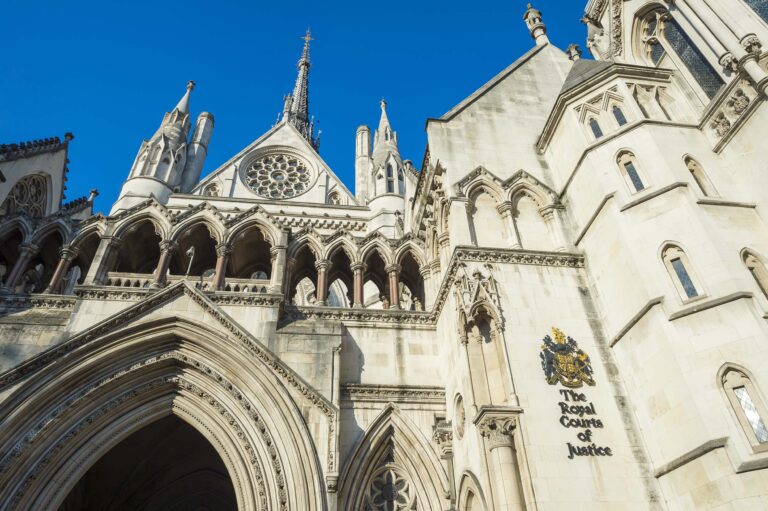Environmental Impact Assessment (EIA) requires most projects likely to have a significant environmental impact to be properly assessed before consent is given. It is an important tool for all concerned in better development planning. This firm has taken many of the cases leading to its effective implementation – often in the teeth of resistance from government and developers.
Assessment of environmental impact of projects may seem common sense, but developers and government keen to support them can find it inconvenient. Given modern environmental concerns, rules requiring it might have come anyway, but what we have now is a legacy of EU membership. In 1988, a directive was made to ensure that the environmental effects of projects are properly examined before consent is given to the developer to proceed, and with rights for members of the public (individuals, groups, parish councils etc.) to have their say. The UK originally thought that the directive would have little impact on the existing planning system, only applying to a few major projects. The European Court of Justice, however, consistently interpreted the directive as having a “wide scope and broad purpose” and offered member states limited discretion in its implementation.
The directive was clarified and improved by amendments, the most recent of which came into effect in 2017 via the Town and Country Planning (EIA) Regulations 2017. Following Brexit, these remain in effect.
We were first involved with the directive in 1990, when Richard Buxton acted for the RSPB in challenging a failure to assess a port development at Lappel Bank, Isle of Sheppey. We lost then, because the judge held, wrongly in the light of later decisions by the ECJ, that the local authority had a discretion in applying the directive to the project in question. The dispute eventually went to the House of Lords and thence the ECJ which gave a landmark ruling (1996) in relation to the need for protection of habitats and the need to compensate for habitat destruction.
We have been involved with many, indeed most, of the EIA-related cases. The most notable cases are the House of Lords decisions in Brown (old mining permissions) (1999), in Berkeley (2000) (development at Fulham Football Club), in Barker (2006) (a multiplex cinema development at Crystal Palace Park) following a ruling by the ECJ and following another decision in our Wells (2004) case (housing in a biologically interesting quarry). The High Court and Court of Appeal have given notable rulings in many other cases. A decision of the House of Lords in Edwards (cement plant in Rugby) turned out later in the Supreme Court to be one of the most important rulings on protection from costs in environmental cases and of the ECJ in Mellor for requirement to give reasons for not requiring EIA. Within that framework and more recently, but many cases in between, in Swire (2020) the High Court overturned the Secretary of State’s decision that EIA was not required for a housing development on contaminated land and in London Historic Parks and Garden Trust (2020), the High Court scrutinised the government’s duties under the EIA regulations to remain unbiased and objective when determining its own application for a Holocaust Memorial in Victoria Tower Gardens, a small park next to Parliament.
These cases overall have left the law significantly more effective than its original weak arrival in the UK. So, taking on cases has generally been positive, both for the law generally and the particular circumstances.
EIA is not intended to prevent developments, but as a tool to see that those likely to have significant environmental effects are assessed and planned properly at an early stage. They are also an important source of information for local people so that they develop a proper understanding of the project and its likely impact on their environment. The legal requirements also make decision-makers more accountable. Lack of EIA may have no effect on the acceptability of development. However, it often turns out to be the case that the unlawful lack of or (sometimes) inadequacy in EIA indicates a substantive problem.
We are not the right firm to go to if you want to organise a big development. However even developers have asked us for help dealing with difficulties in approaching environmental matters and procedural unfairness they may face over EIA.
Meet the team
Please get in touch if you have an issue relating to EIA on which you think we might assist.
Get in touch
Example Cases
Ashchurch "Bridge to Nowhere" Appeal
R (Ashchurch Rural Parish Council) v Tewkesbury Borough Council
Challenge to “bridge to nowhere” near Tewkesbury leads to successful appeal clarifying important points of planning law
Motocross racing CLEUD in AONB quashed
Healey Parish Council v Northumberland County Council
County Council’s grant of Certificate of Lawful Use quashed.
A38 Derby Junctions Development Consent Order
R (Bain) v Secretary of State for Transport
Successful challenge to the A38 Derby Junctions Development Consent Order.
Former BSE cattle disposal facility challenge
R (Swire) v SoS HCLG
Lack of expert evidence for housing application on former rendering site unlawful.
Chicken farm planning permission quashed
R (Bury) v Shropshire Council
Shropshire Council consents to judgment following permission to proceed on several grounds.
Waterside Drive Sportshub green belt policy
R (Boot) v Elmbridge Borough Council
Challenge to Waterside Drive Sports Hub for conflict with green belt policy
Barker - EIA at reserved matters stage
R v LB Bromley ex parte Diane Barker
EIA can be required at later stages in planning process.
Burkett - Imperial Wharf - JR timing
R (Burkett) v Hammersmith and Fulham London Borough Council
Burkett – Imperial Wharf, London – EIA challenge – from when time runs for judicial review.
Berkeley - Fulham Football Club
Berkeley v Secretary of State For The Environment and Others
Berkeley - Fulham FC - redevelopment intruding into Thames - EIA requirements to be followed.
Thank you very much for all your very hard work. It's paid dividends. Brilliant.




